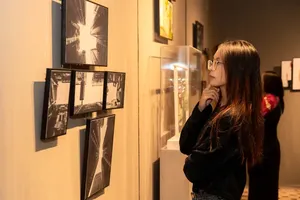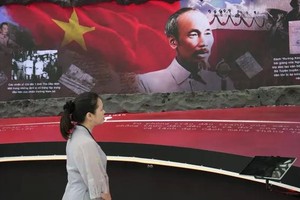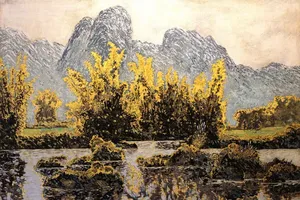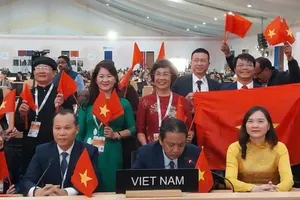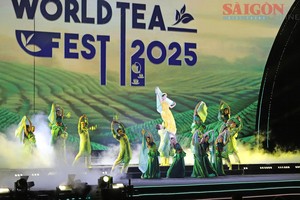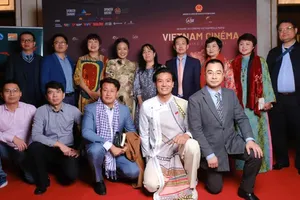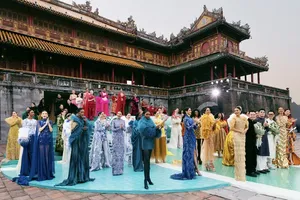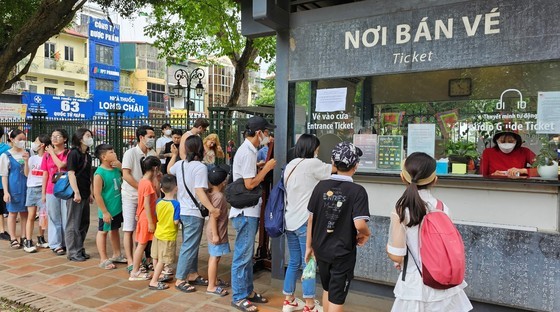 |
| Van Mieu-Quoc Tu Giam (Temple of Literature) receives about 10,000 visitors a day during the national holiday. (Photo: SGGP) |
According to Director of the Temple of Literature’s Culture and Science Center, Le Xuan Kien, the management board of the historical site has strengthened the implementation of measures to prevent and control the Covid-19 epidemic and reminded visitors to wear masks and use hand sanitizer when they visited the temple.
The Temple of Literature has recently organized many cultural activities and displayed creative spaces for visitors. In addition, the relic site also focuses on preservation and promotion works.
The Garden of Doctor Steles in the historical site records the names of the doctoral laureates of the Royal Examination, namely Nguyen Truc, Ngo Si Lien, Luong The Vinh, Le Quy Don, Ngo Thi Nham, and more.
After several years of building fences and carrying out propaganda on protecting artifacts, visitors can enjoy exhibits but do not encroach and touch objects.
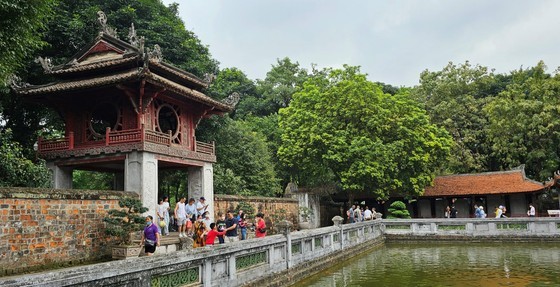 |
| Hanoians tend to travel locally and take sightseeing tours around the city during this year’s public holidays. (Photo: SGGP) |
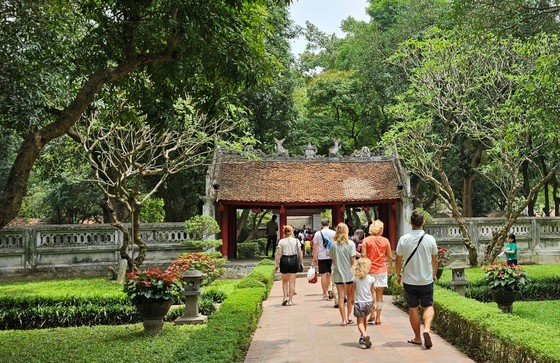 |
| Foreign tourists visit Van Mieu-Quoc Tu Giam (Temple of Literature). (Photo: SGGP) |
Built in the 11th century during the Ly Dynasty (1010 – 1225), the complex consists of Van Mieu, a temple dedicated to Confucius as Confucianism used to be a popular religion in Vietnam in feudal times, and Quoc Tu Giam, the first national university of the country. The Temple of Literature was recognized as a Special National Relic in 2012.
The complex includes valuable architectural works of Khue Van Cac (the pavilion of the constellation of literature), Thien Quang Well (Well of Heavenly Clarity), and Dai Thanh Mon (the gate to great success).
Especially, 82 stone steles commemorating the graduation of royal mandarins from the 15th to 18th centuries at the Temple of Literature were recognized as a Memory of the World by UNESCO in 2010. They not only record the names of people who passed doctoral exams during nearly 300 years from 1442 to 1779, but also reflect life, society, political context, and the spirit of previous centuries.

